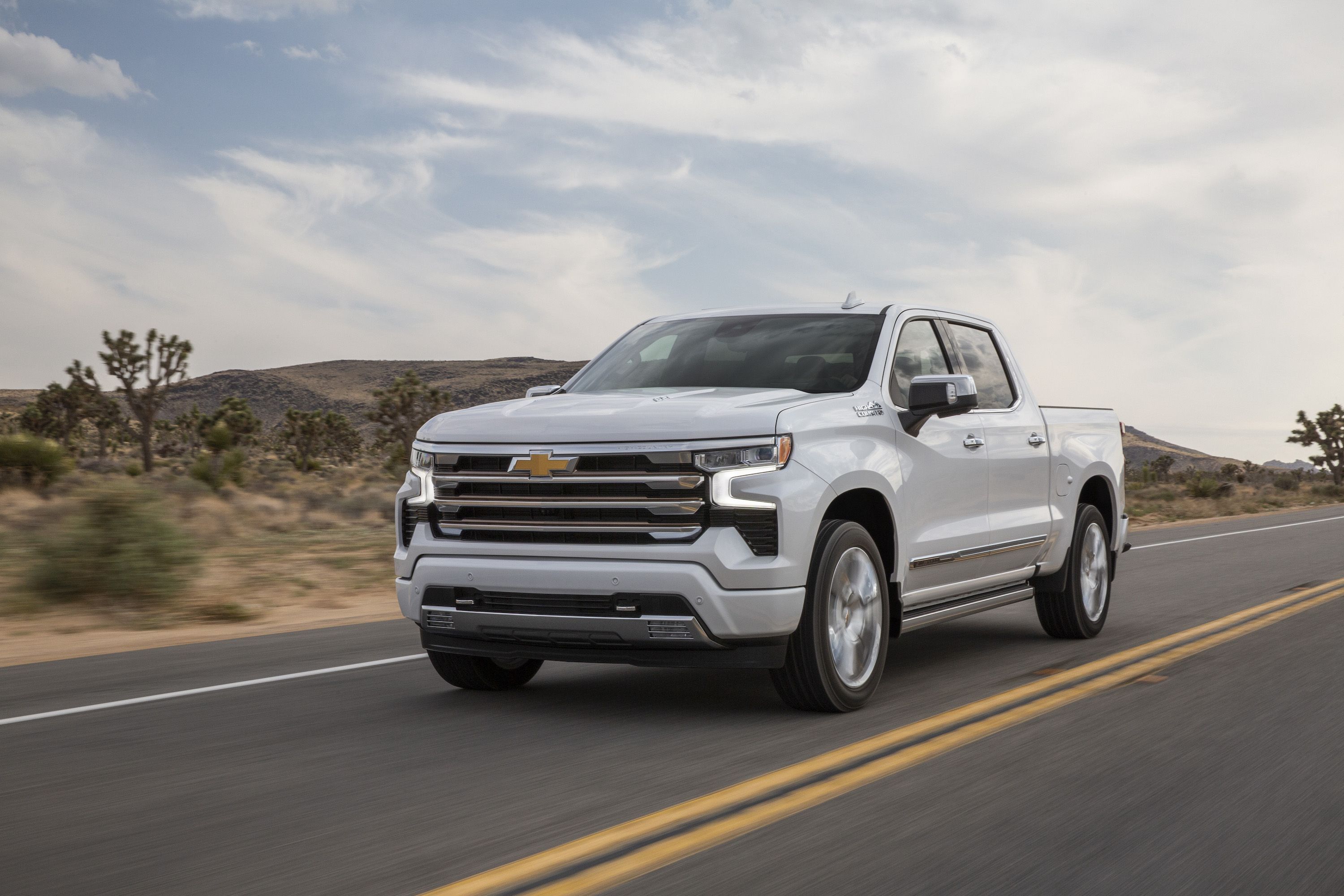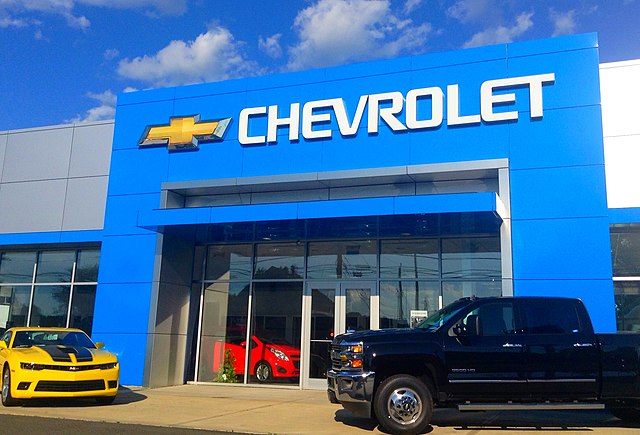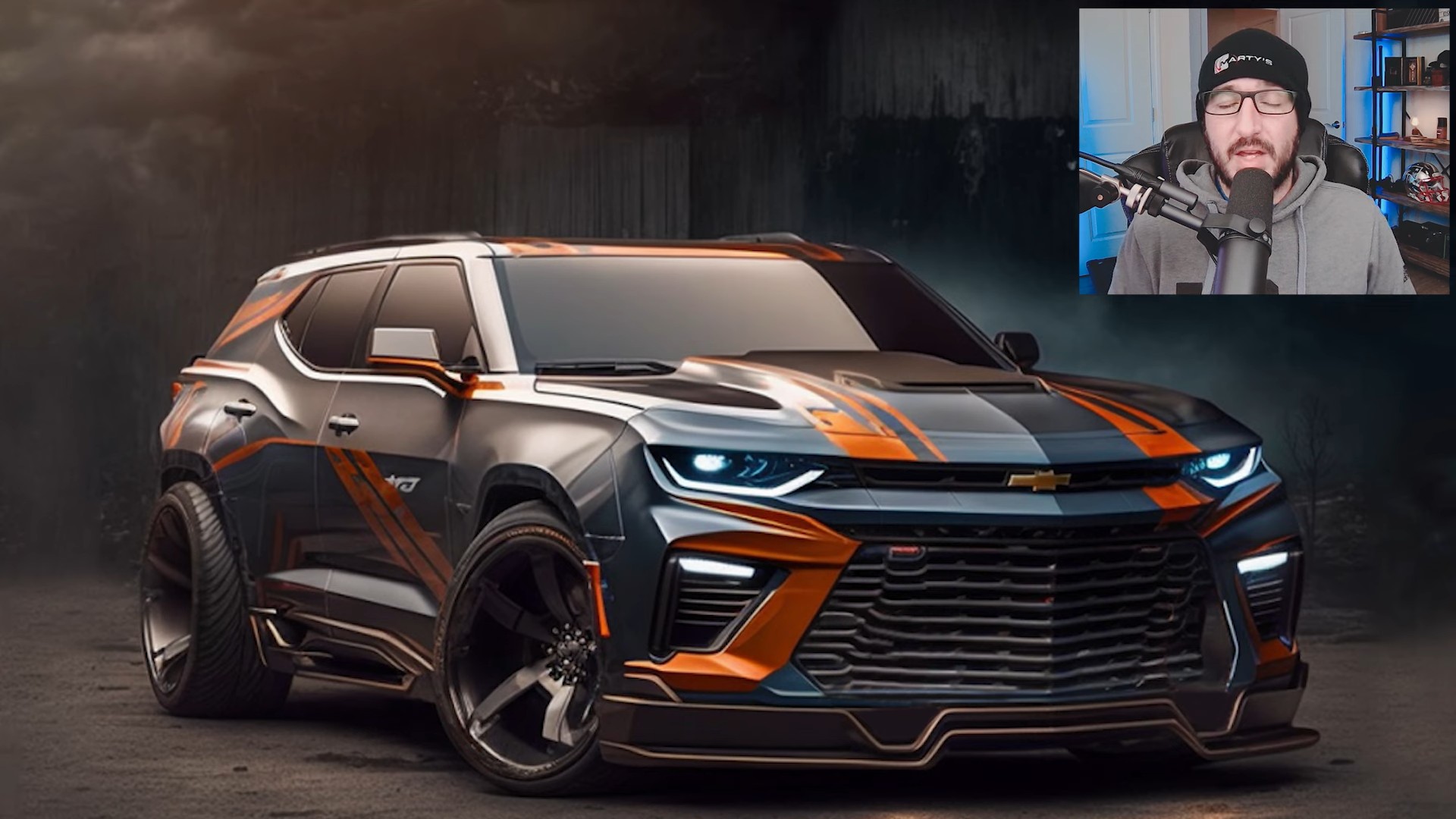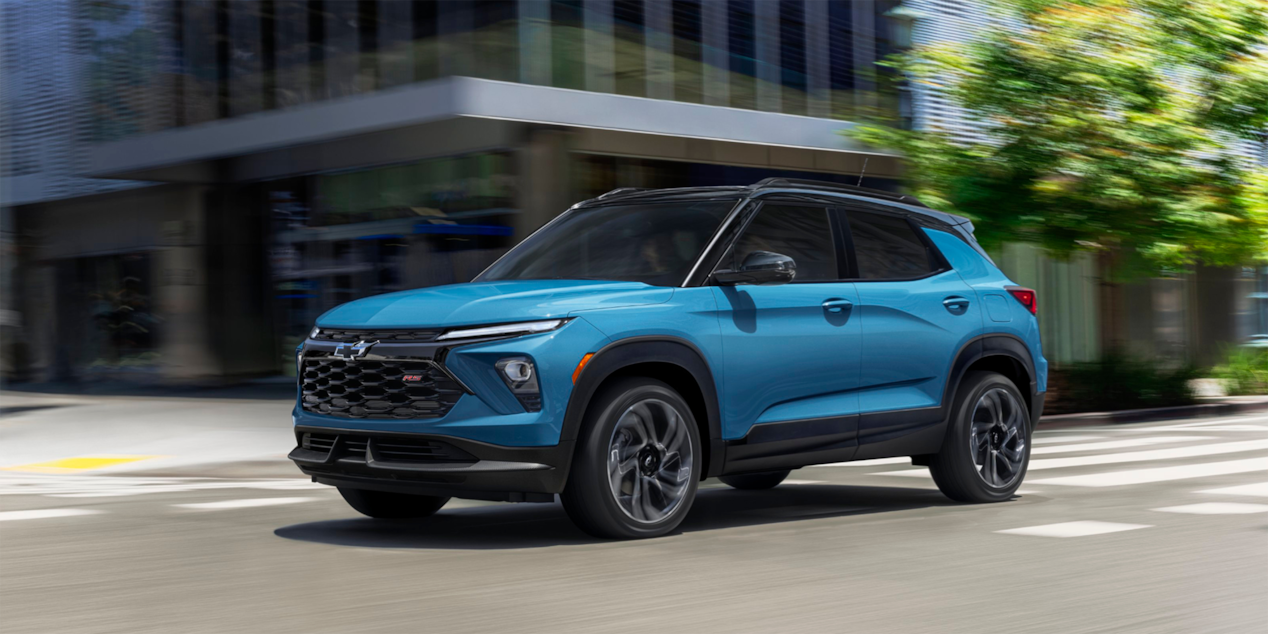Chevy K10 4×4 Pickup Trucks For Sale: Your Ultimate Buyer’s Guide pickup.truckstrend.com
In the vast landscape of classic American trucks, few command the same reverence and enduring appeal as the Chevrolet K10 4×4 pickup. More than just a vehicle, the K10 represents an era of rugged utility, timeless design, and a no-nonsense approach to getting the job done, whether on the farm, at the worksite, or exploring the backcountry. For enthusiasts and collectors alike, finding a Chevy K10 4×4 for sale isn’t just about acquiring a truck; it’s about owning a piece of automotive history that continues to offer unparalleled versatility and a distinctive presence on the road.
This comprehensive guide is designed to navigate the exciting world of K10 4×4 ownership. From understanding its rich lineage and key features to practical advice on what to look for, where to find them, and what to expect in terms of pricing and maintenance, we’ll equip you with the knowledge needed to make an informed and satisfying purchase. Whether you’re seeking a pristine show truck, a reliable daily driver, or a rewarding restoration project, the journey to owning a K10 4×4 begins here.
Chevy K10 4×4 Pickup Trucks For Sale: Your Ultimate Buyer’s Guide
The Enduring Legacy of the Chevy K10 4×4
The Chevy K10, part of Chevrolet’s C/K series of full-size pickup trucks, debuted in 1960. The "K" designation specifically denotes a factory four-wheel-drive configuration, setting it apart from its two-wheel-drive "C" siblings. Built for resilience and capability, the K10 quickly established itself as a workhorse, tackling challenging terrains and heavy loads with ease. Its straightforward mechanicals, robust chassis, and powerful V8 engine options made it a favorite among farmers, construction workers, and adventurers.
Over the decades, the K10 evolved through several distinct generations, each leaving its unique mark on automotive design and engineering. Despite these changes, the core appeal remained: a tough, dependable, and aesthetically pleasing truck that could go anywhere. Today, this blend of vintage charm and practical utility makes the K10 4×4 highly sought after in the classic truck market, appealing to those who appreciate mechanical simplicity, customization potential, and a tangible connection to American automotive heritage.
Navigating the Generations: Key K10 Eras
Understanding the different generations of the K10 4×4 is crucial when searching for one, as each offers unique styling cues, mechanical variations, and often, differing price points and availability.
First Generation (1960-1966): The "Apache" and "Thriftmaster" Era

These early K10s are characterized by their sleek, almost car-like styling, particularly the "eyebrow" hood design. They featured torsion bar front suspension for a smoother ride, which was innovative for the time. Finding a K10 4×4 from this era is less common, especially in good condition, making them quite desirable for collectors. They are true vintage pieces, often requiring more specialized knowledge for restoration.
Second Generation (1967-1972): The "Action Line"
Often referred to as the "Action Line" trucks, this generation is arguably the most popular and iconic. Known for their clean, sophisticated lines, "egg crate" grilles, and the famous "Cheyenne" trim levels, these K10s are highly coveted. They offered a more refined ride and interior compared to their predecessors while maintaining rugged durability. The 1967-1972 K10s command premium prices, especially in restored or well-preserved condition, due to their timeless aesthetics and strong enthusiast following.
Third Generation (1973-1987/1991): The "Square Body"
The "Square Body" K10s are the most prevalent and recognizable generation. With their angular, utilitarian design, these trucks epitomized the rugged American pickup for nearly two decades. They introduced more comfortable interiors, improved ride quality, and a wider array of engine and transmission options, including the popular 350 cubic-inch V8 and later, the 6.2L diesel. While still robust, the later models (1988-1991) were technically part of the R/V series but often still referred to as "Square Bodies" due to shared aesthetics. Their widespread production means parts are generally easier to find, and prices can be more accessible, making them an excellent entry point for many K10 enthusiasts.

The Heart of the Beast: Engines, Transmissions, and 4×4 Systems
A K10’s performance and desirability are heavily influenced by its powertrain and 4×4 setup.
Common Engine Options
- Inline-6 (I6): Primarily the 250 cubic-inch (4.1L) I6, known for its bulletproof reliability and decent torque, though not particularly fast.
- Small Block V8s: The most common and popular choices. These include the 283, 307, 327, and the ubiquitous 350 cubic-inch (5.7L) V8. The 350 offers a great balance of power, parts availability, and aftermarket support.
- Big Block V8s: The 454 cubic-inch (7.4L) V8 was available in later Square Body K10s, providing immense power and torque for heavy hauling or serious off-roading.
- Diesel: The 6.2L Detroit Diesel V8 was introduced in the 1980s, offering better fuel economy but with less power than the gasoline V8s.

Transmission Choices
- Manual Transmissions: The SM465 (4-speed manual with a very low first "granny" gear) is common and incredibly robust. Other manuals like the SM420 were found in earlier models.
- Automatic Transmissions: The TH350 (3-speed) and TH400 (3-speed, heavy-duty) were widely used. Later Square Bodies introduced the 700R4 (4-speed with overdrive), which improved highway fuel economy.
Four-Wheel Drive System
The K10 utilizes a part-time 4×4 system, meaning the driver manually engages four-wheel drive when needed. Key components include:
- Transfer Case: Common units include the NP205 (gear-driven, highly desirable for its strength), NP203 (full-time 4×4, but often converted to part-time), and NP208 (chain-driven, found in later Square Bodies).
- Front Axle: Typically a Dana 44 or later, a GM 10-bolt.
- Rear Axle: Often a GM 12-bolt or 10-bolt, or a Dana 60 for heavier applications.
- Locking Hubs: Manual locking hubs on the front wheels are standard, requiring the driver to get out and turn them to engage 4×4.
What to Inspect Before Buying Your K10 4×4
Purchasing a vintage truck requires careful inspection. Here’s a checklist for prospective K10 buyers:
- Rust, Rust, Rust: This is the primary enemy. Check:
- Frame: Especially around spring hangers, crossmembers, and steering box. Look for severe pitting or cracks.
- Body: Cab corners, rocker panels, fender wells, floor pans, bed floor, bed sides, and tailgate. Pay close attention to the drip rails above the doors.
- Mounting Points: Body mounts, radiator support.
- Engine Condition: Look for leaks (oil, coolant), listen for knocks, ticks, or unusual noises. Check oil clarity, exhaust smoke color. A compression test is ideal.
- Transmission & Transfer Case: Check fluid levels and condition. Ensure smooth shifts (manual or automatic). Test 4×4 engagement (high and low range). Listen for grinding or whining from the transfer case.
- Drivetrain: Inspect universal joints (U-joints) for play, differential covers for leaks, and axle shafts for signs of damage.
- Suspension & Steering: Check for worn ball joints, tie rod ends, kingpins (on earlier models), leaf springs (cracks, sag), and shocks. Test for excessive play in the steering wheel.
- Brakes: Inspect lines, calipers/wheel cylinders, and master cylinder for leaks. Test pedal feel.
- Electrical System: Test all lights, gauges, wipers, heater fan, and radio. Check wiring for signs of amateur repairs or rodent damage.
- Interior: Assess seat condition, dashboard cracks, door panels, and headliner. These are often indicators of overall care.
- Paperwork: Ensure the title is clean and matches the VIN on the truck. Check for past accident history if possible.
Finding Your K10: Restored, Original, or Project?
K10s for sale typically fall into one of three categories, each with its own pros and cons:
- Restored/Show Quality: These trucks have undergone extensive restoration, often to a concours level. They are typically turn-key, look fantastic, and command the highest prices. While the initial cost is high, you save on restoration time and expenses.
- Good Driver Quality: These K10s are mechanically sound, presentable, and can be driven reliably. They may have some minor flaws, dings, or patina. They offer a great balance of usability and classic appeal without the top-tier price tag.
- Project Truck: These K10s require significant work – bodywork, mechanical repairs, or a full overhaul. They are the most affordable upfront but demand a substantial investment of time, money, and skill. Ideal for those who enjoy wrenching and have a vision for their custom build.
Where to Look for Your Chevy K10 4×4
- Online Auction Sites: Bring a Trailer, eBay Motors, Hemmings Auctions often feature high-quality K10s.
- Classic Car Marketplaces: ClassicCars.com, Hemmings Motor News, AutoTrader Classics list vehicles from private sellers and dealers.
- Specialty Dealerships: Dealers specializing in classic trucks often have a curated selection, though prices may be higher.
- Online Forums & Social Media Groups: Dedicated K10 or Square Body forums and Facebook groups are excellent places to find trucks for sale directly from enthusiasts.
- Local Classifieds & Auctions: Keep an eye on local classifieds, estate sales, and auto auctions for hidden gems.
Pricing Guide: Chevy K10 4×4 Pickup Trucks For Sale
The price of a K10 4×4 varies dramatically based on generation, condition, originality, engine/transmission combination, and location. This table provides a general estimate.
| Generation/Year Range | Condition Category | Estimated Price Range (USD) | Notes & What to Expect |
|---|---|---|---|
| 1st Gen (1960-1966) | Project | $5,000 – $15,000 | Significant rust, non-running, missing parts. Rare and challenging projects. |
| Driver-Quality | $18,000 – $35,000 | Running, driving, some rust, older paint, functional but not perfect. | |
| Restored/Show | $40,000 – $75,000+ | Professionally restored, excellent condition, often original or period-correct. | |
| 2nd Gen (1967-1972) | Project | $7,000 – $20,000 | Common for projects, often with significant body rust or mechanical issues. |
| Driver-Quality | $25,000 – $50,000 | Solid mechanicals, presentable paint, minor imperfections. High demand. | |
| Restored/Show | $55,000 – $100,000+ | Highly sought-after. Pristine condition, often with modern upgrades. | |
| 3rd Gen (1973-1987) | Project | $3,000 – $12,000 | Most common for projects. Rust in typical areas, may not run. |
| Driver-Quality | $15,000 – $35,000 | Good daily driver candidates, some wear and tear, reliable. | |
| Restored/Show | $40,000 – $70,000+ | Fully restored, often with upgraded powertrains or modern amenities. | |
| Exceptional Builds | Custom/Resto-Mod | $70,000 – $150,000+ | Professionally built with modern engines (LS swaps), custom interiors, high-end suspension, etc. |
Prices are highly variable and subject to market trends, specific features, and location. This table serves as a general guide.
Practical Advice for Your K10 Purchase
- Set a Realistic Budget: Factor in not just the purchase price, but also potential immediate repairs, insurance, registration, and ongoing maintenance.
- Get a Pre-Purchase Inspection (PPI): If possible, have a trusted mechanic (preferably one familiar with vintage trucks) inspect the vehicle, especially for out-of-state purchases.
- Understand Your Needs: Are you looking for a daily driver, a weekend cruiser, an off-road beast, or a show queen? This will dictate the condition and features you should prioritize.
- Don’t Rush: K10s are plentiful, especially Square Bodies. Take your time to find the right one that fits your budget and expectations.
- Join Forums/Groups: Engage with the K10 community. Their collective knowledge can be invaluable for advice, parts sourcing, and even finding trucks for sale.
- Factor in Shipping: If buying out of state, get quotes for professional vehicle transport.
Frequently Asked Questions (FAQ) about Chevy K10 4×4 Pickup Trucks For Sale
Q1: Are Chevy K10s reliable for daily driving?
A1: With proper maintenance and potentially some modern upgrades (like electronic ignition or fuel injection), a K10 can be a reliable daily driver. However, remember they are older vehicles and will require more attention than a modern truck. Fuel economy will also be significantly lower.
Q2: How difficult is it to find parts for a K10?
A2: For 2nd and 3rd generation K10s ("Action Line" and "Square Body"), parts availability is generally excellent. Many reproduction body panels, interior components, and mechanical parts are readily available from various aftermarket suppliers. First-generation parts can be more challenging to source.
Q3: What are common modifications for K10 4x4s?
A3: Popular modifications include lift kits, larger tires, engine swaps (especially LS-series V8s for modern power and efficiency), upgraded braking systems, interior creature comforts (A/C, modern audio), and suspension improvements.
Q4: Is a K10 a good investment?
A4: While not a guaranteed financial investment like some rare muscle cars, well-maintained or professionally restored K10s (especially 2nd generation) have shown strong appreciation in value. Their enduring popularity suggests they will likely hold their value well in the classic truck market.
Q5: What’s the difference between a K10, K20, and K30?
A5: The numbers refer to the truck’s payload capacity or "ton rating." K10 is a half-ton (1/2 ton) truck, K20 is a three-quarter-ton (3/4 ton), and K30 is a one-ton (1 ton). K20s and K30s generally have heavier duty frames, axles, brakes, and suspension components for increased hauling and towing capacity.
Conclusion: Driving Home Your Dream K10
The allure of a Chevy K10 4×4 pickup for sale extends far beyond its rugged capabilities and classic aesthetics. It embodies a spirit of adventure, durability, and a simpler time in automotive design. Whether you’re drawn to the iconic lines of an "Action Line" K10, the utilitarian charm of a "Square Body," or the rare heritage of a first-generation model, owning one is an experience that connects you to a rich chapter of American history.
While the search requires diligence and a keen eye for potential issues, the reward of finding the right K10 is immeasurable. With the right research, a clear understanding of your needs, and a bit of patience, you can confidently navigate the market and drive home a legendary truck that will undoubtedly turn heads, conquer trails, and provide years of enjoyment. The K10 isn’t just a vehicle; it’s a lifestyle, and for many, it’s the ultimate pickup.
